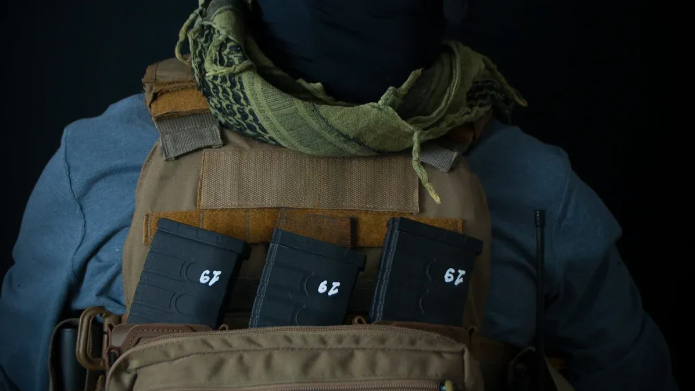Soft body armor provides essential protection for law enforcement, military, and security personnel. However, it has a limited lifespan. Most experts agree that soft armor generally lasts about five years, depending on material quality, usage, and storage. Understanding when and why soft armor expires helps ensure continued safety and reliability.

Factors Affecting Longevity of Soft Armor
Material Degradation
Soft body armor relies on advanced fibers for protection. Over time, these fibers can break down, which reduces performance. Exposure to moisture, UV light, and chemicals speeds up this process and shortens the useful life of the armor.
Note: Regularly check for signs of fiber fraying or discoloration. These changes may signal a drop in performance.
Physical Wear and Tear
Daily use causes friction and stretching in soft armor. Tears, cuts, or worn spots can appear on the surface. These issues lower the performance of body armor and may lead to early expiration.
A quick checklist for wear and tear:
- Check for rips or holes.
- Look for loose stitching.
- Feel for lumps or uneven padding.
Usage Frequency
Frequent use puts more stress on soft armor. Officers or security staff who wear body armor every day will see faster performance decline. Occasional users may notice a longer useful life, but regular inspection remains important.
|
Usage Level |
Expected Useful Life |
Performance Risk |
|---|---|---|
| Daily | Shorter | Higher |
| Occasional | Longer | Lower |
Storage Conditions
Proper storage helps maintain soft armor endurance. High heat, humidity, or direct sunlight can damage the fibers and reduce performance. Storing body armor flat and in a cool, dry place extends its useful life and delays expiration.
Tip: Never store soft body armor in a car trunk or near chemicals. These environments can speed up expiration and lower performance.
Signs that Soft Armor Should Be Replaced
Visible damage
Visible damage is one of the clearest signs that body armor needs replacement. Tears, holes, or frayed edges can appear after regular use. If someone asks, “does body armor expire,” visible damage provides a strong reason to consider immediate replacement.
Inspect both the outer shell and the inner panels for any signs of wear.
Loss of structural integrity
Body armor must keep its shape to offer protection. If the armor feels lumpy, warped, or has uneven padding, it may not work as designed. These changes answer the question, “does body armor expire,” because they show the armor no longer meets safety standards.
A quick check for structural integrity:
- Press along the panels to feel for soft spots.
- Look for areas that do not return to their original shape.
- Compare the armor to a new model if possible.
Exposure to contaminants
Contaminants like oil, sweat, or chemicals can weaken the fibers in soft armor. When body armor comes into contact with these substances, its protective qualities drop. Many experts say, “does body armor expire,” and exposure to contaminants is a key reason for early expiration.
Tip: Always clean armor according to the manufacturer’s instructions to avoid damage.
Age-based replacement
Even if body armor looks fine, age matters. Most manufacturers recommend a replacement timeline of five years. The answer to “does body armor expire” is yes, and age alone can make armor unsafe.
|
Sign of Expiry |
Action Needed |
|---|---|
| Over five years old | Replace immediately |
| No visible damage | Still replace if expired |
Regular checks help users know when to replace soft armor. Following these signs ensures that body armor continues to provide the best protection.
Inspection and Maintenance

Regular inspection protocols
Routine checks help keep body armor effective. Users should inspect both the outer shell and the inner panels for any signs of damage. A monthly inspection schedule works well for most people.
- Look for rips, holes, or frayed edges.
- Check for lumps or uneven padding.
- Confirm that all straps and fasteners work properly.
Cleaning and care tips
Proper cleaning extends the life of soft armor. Always remove the panels before washing the carrier. Use mild soap and cool water for cleaning.
- Never use bleach or harsh chemicals.
- Air dry the armor away from direct sunlight.
- Store body armor flat in a cool, dry place.
Note: Following these steps helps maintain the armor’s certification and performance.
Record keeping
Good record keeping supports safety and compliance. Users should log each inspection and cleaning. Records should include the date, findings, and any actions taken.
|
Task |
Date | Findings |
Action Taken |
|---|---|---|---|
| Inspection | 2024-03-01 | No damage | None |
| Cleaning | 2024-03-15 | Stains removed | Air dried |
Keeping detailed records helps track the age of soft armor and ensures timely replacement. This practice also supports organizational policies and legal requirements for body armor.
Consequences of Using Expired or Damaged Armor
Reduced ballistic protection
Expired or damaged soft armor cannot provide the same level of ballistic performance as new equipment. The fibers inside may lose strength, which lowers the ability to stop bullets or other threats. Users who ignore the expiration date risk wearing body armor that no longer meets safety standards.
Ballistic performance drops quickly when armor ages or suffers damage.
Increased injury risk
When soft armor loses its protective qualities, the chance of injury rises. A weakened vest may fail during a dangerous encounter. Even a small tear or worn spot can lead to serious harm if the armor does not perform as expected.
- Users should always check for signs of damage.
- Replacing old armor helps prevent unnecessary injuries.
Liability issues for organizations
Organizations that allow staff to wear expired or damaged body armor face legal and financial risks. If an employee gets hurt because of poor ballistic performance, the organization may be held responsible. Keeping track of the life expectancy of body armor and following replacement schedules protects both staff and the organization.
|
Risk Type |
Impact |
|---|---|
| Legal Liability | Lawsuits, fines |
| Safety Violation | Staff injuries, loss of trust |
Proper care and timely replacement of soft armor help maintain safety and reduce liability.
Conclusion
Soft armor does not last forever, and its effectiveness can decline due to age, wear, and exposure to damaging elements. Regular inspection, proper care, and adherence to manufacturer guidelines are key to maintaining optimal protection. By recognizing the signs of damage and following recommended replacement timelines, users and organizations can ensure that their soft armor continues to perform as intended—protecting lives and minimizing risk.
